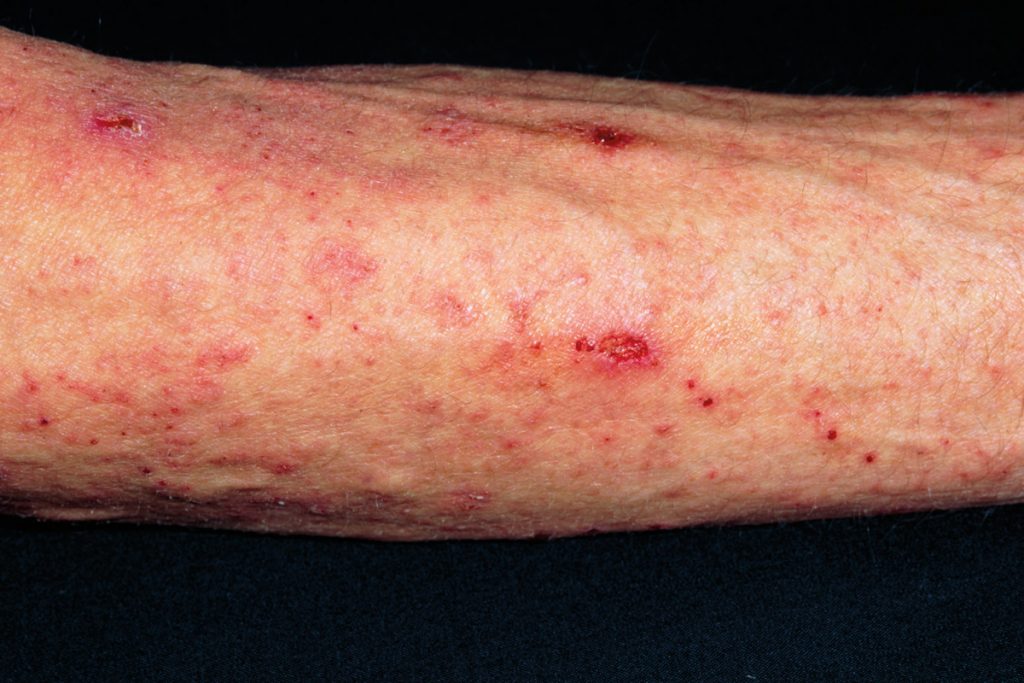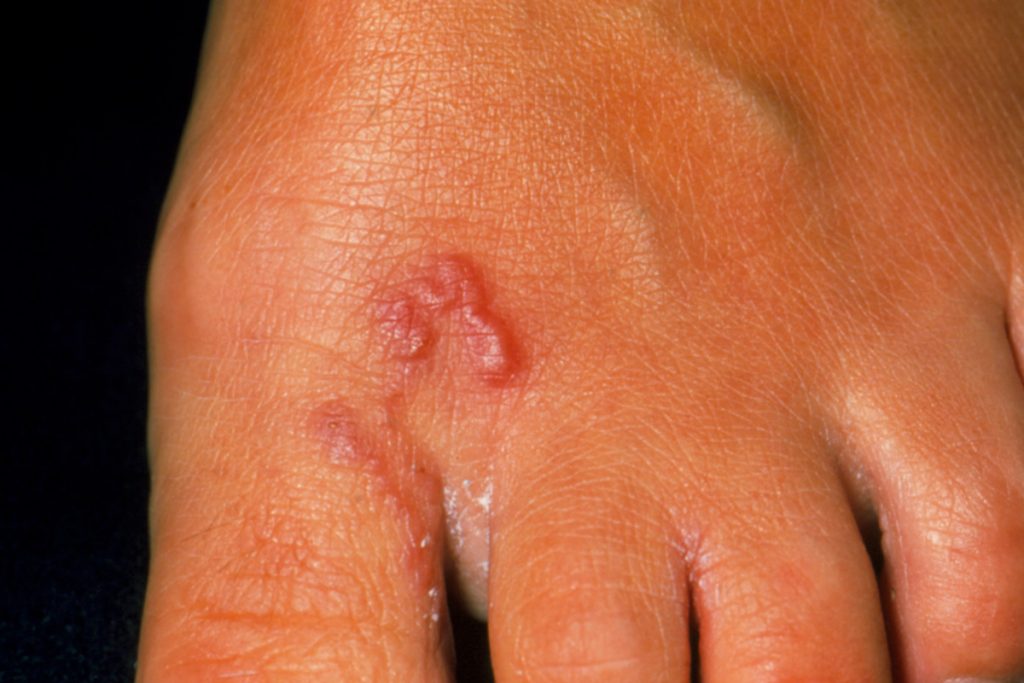What do these presentations add up to? By Dr Keith Hopcroft
CASE EASY
The patient
A 60-year-old man with no significant past medical history who is on occasional co-codamol for back pain.
He says
‘The doctors don’t seem to know what’s wrong with my itchy skin. I’ve seen a few and none of the treatments have helped. It’s been going on for weeks. The itching is so bad that I’m tearing myself to pieces. It’s even waking me up at night.’
+

=
See end of article for answer
CASE MODERATE
The patient
A 30-year-old woman with no relevant past medical history.
She says
‘I’ve just come back from the Caribbean and I’ve got the weirdest looking athlete’s foot. It must be because of all the swimming I did. It’s really tingly and itchy, and seems to be spreading.’
+

=
See end of article for answer
CASE HARD
The patient
A 60-year-old male. For the last year he has seen various GPs and dermatologists about what he believes to be an infestation, which causes spots and itching. No clear diagnosis has been made, and innumerable treatments have been tried, with no success.
He says
‘I can’t bear this any longer. Everyone I’ve seen appears to be incompetent. I’ve resorted to disinfecting my skin every night. I want you to send off some tests.’
+

=
See end of article for answer
Dr Keith Hopcroft is Pulse’s medical adviser and a GP in Basildon, Essex
Answers
EASY The clues are mainly in the history: repeated attendance (scabies can be hard to diagnose, especially early on) and night waking (this is one of the few skin conditions itchy enough to wake people from sleep). Examination may not contribute much, as the rash can take various forms, but excoriations of this degree are suggestive, and burrows may be present, too. Treatment is topical insecticides – which should also be used by household members and other close contacts.
MODERATE This is not athlete’s foot. It is caused by infestation with a hookworm larva. Larvae are found in sand or soil and can penetrate human skin – so this presentation is occasionally seen in general practice as an unwanted souvenir of a trip abroad. The clue is the history of foreign travel and the characteristic serpiginous rash. Left alone, the problem will resolve when the larva dies – or it can be treated with anthelmintics.
HARD This is a fixed delusion in which patients are convinced they are infested with a parasite. They tend to find medical advice unhelpful – as it may take time to reach a diagnosis and treatments are ineffective – and go to extreme measures to relieve their symptoms. Typically, they are keen to have the ‘parasite’ identified, bringing samples – these generally turn out to be normal skin or hair. Psychiatric treatment is appropriate, but is often resisted.
Pulse October survey
Take our July 2025 survey to potentially win £1.000 worth of tokens











